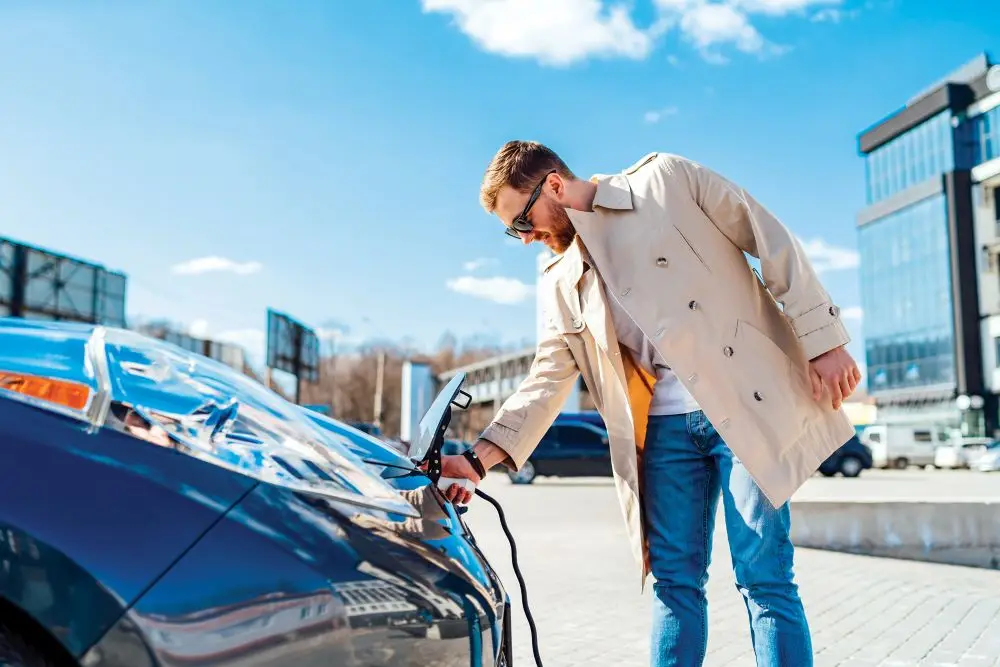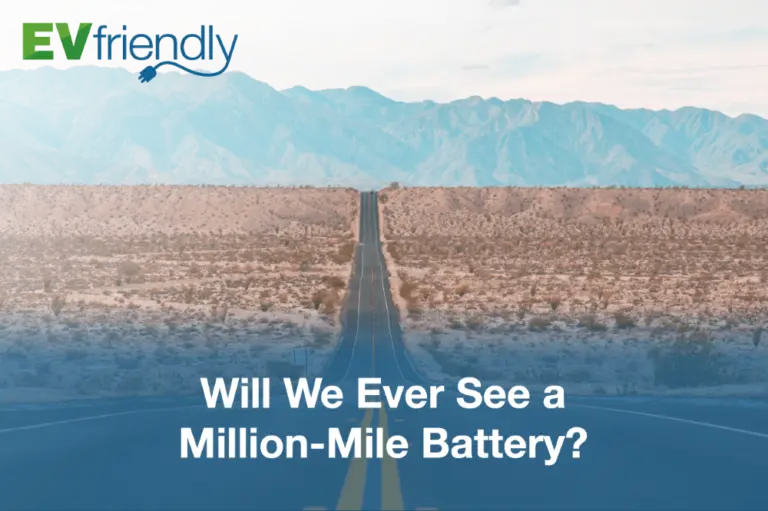Owning a vehicle is about more than just getting you from point A to point B; owning a vehicle provides you with opportunities that you may not otherwise have in life. Vehicle ownership provides freedom, independence, security, and peace of mind. It is also a statement about your status in society, and it reflects your personal style and values. New federal regulations mandating electric vehicle (EV) sales, however, may force many out of the market entirely.
One-fifth of all passenger cars, SUVs, and trucks sold in Canada in 2026 will need to run on electricity under the new regulations introduced by Environment Minister Steven Guilbeault. By 2030, according to the federal government’s plan, the mandate will hit 60% of all sales, and by 2035, every passenger vehicle sold in Canada will need to be electric. In previous legislation the federal government introduced similar mandates, but there was no mechanism for enforcement. Under the new regulations, manufacturers or importers who do not meet sales targets could face penalties under the Canadian Environmental Protection Act. According to Guilbeault’s parliamentary secretary, Julie Dabrusin, the policy is “about making sure that Canadians have access to the vehicles they want.”
It is true that long wait lists are discouraging many Canadians from purchasing an electric vehicle at this time. COVID-19 severally disrupted the global “just in time” manufacturing process, which caused severe supply shortages, but this was not the only cause. There continues to be shortages of critical minerals used in the manufacturing of lithium-ion batteries and micro-chip shortages, of which Taiwan is the world’s major supplier. EVs may use up to 10 times the number of microprocessors that an average internal combustion engine (ICE) vehicle would. These shortages, along with the lack of a global supply chain infrastructure, are placing constraints on manufacturer’s ability to mass produce enough electric vehicles to meet current demand, and they are projected to remain for several more years at least.
Governments definitely have a role to play in ensuring that manufacturers and consumers are provided with the right incentives. Governments must also help to develop the infrastructure needed to support the shift to electric. If you see the climate crisis as a “climate emergency,” as the current administration clearly does (along with many other Canadians), then this transformation becomes a moral imperative which then drives the impetus for government intervention in the market, thus accelerating the shift to electric. However, good intentions can have unintended consequences, or at the very least accelerate trends that are already growing. One such trend is the shift away from vehicle ownership to other forms of mobility.
The Emergence of automobiles in the 20th century
At the turn of the 20th century, the automobile began to appear on the streets of European and North American cities. Some were electric, some were powered by the internal combustion engine, and a few were even powered by steam. Eventually, it was the gasoline-powered internal combustion engine that won out as the optimal technology. This was due, in part, to Henry Ford’s innovation.
In 1908, Henry Ford introduced the Model T to the world. He wanted a vehicle that would be affordable, simple to operate, and durable. The vehicle was one of the first mass production vehicles, allowing Ford to achieve his aim of manufacturing the universal car. Within 10 years the streets of most North American and European cities went from people getting around by horse and carriage to driving automobiles, those that could afford one.
Is Elon Musk the new Henry Ford?
In some respects the ICE vehicle is now the obsolete, polluting, and less attractive technology, albeit they are still more affordable, accessible, and convenient than electric vehicles. So why have we not seen the accelerated transformation to this new technology that we witnessed at the turn of the century? It comes down to affordability and convenience. Mass production of the Model T brought the average price of the automobile within reach of most working-class people, and they simply became easier to operate and maintain. Who then will become the Henry Ford of the 21st century?
Some see Elon Musk as the next Henry Ford; however, this will largely depend on what sort of personality you see in Musk. In terms of the automobile, there are similarities. For instance, the nomenclature for both the Model T and the Tesla vehicles—Model S, Model 3, Model X, and Model Y—are simple and easy to remember, and both Ford and Musk brought massive innovation to the production line. However, one important distinction between the two is Henry’s Ford vision and purpose. Ford wanted his workers to be able to afford the cars that they built. But Elon Musk? At this point, we have no idea. However, he recently told investors that his company was not prioritizing the $25,000 EV any longer, a is company was not prioritizing the $25,000 EV any longer, and nd his vehicles remain priced in the higher-end of the market.

Cheaper Electric Vehicles: Market Trends and Challenges
China (and to a lesser extent, Vietnam) is now entering the market with cheaper EVs. In China, EVs cost 5% less on average then their gas-powered equivalents. This is accomplished in part due to the production of the lithium iron phosphate battery (LFP). LFP batteries cost less to produce than lithium-ion batteries (LIB) but are also less energy dense and have reduced range. Europe has also come out with cheaper but limited-range EVs such as the Dacia (part of the Renault group), starting at around $28,000 in Canada. But will North Americans buy electric vehicles with limited range batteries? Moreover, who and how will these vehicles be serviced throughout their lifecycle?
Manufacturers are saying they are trying to introduce cheaper EVs. So far, though, it is the luxury EVs that dominate the market. One factor driving up the price of EVs is that automakers, especially luxury automakers, have realized that EVs offer a superior driving experience, so they are focusing their resources on satisfying this market segment. The luxury market is also the most profitable market. There are other criticisms coming from manufacturers like Toyota. Toyota has publicly stated that it thinks governments need to put the brakes on electric vehicle mandates and allow for other alternative markets to flourish. Toyota has invested in its hybrid technology and, as of late, in other alternatives as well, such as hydrogen (even an ICE hydrogen vehicle).
In any event, manufacturers, whether they are producing ICE or electric vehicles, will produce the type of vehicle that maximizes profit. This means that anyone who cannot afford a new vehicle (electric or otherwise) will need to turn to alternatives such as used vehicles or alternatives to vehicles ownership altogether. Buying a used vehicle (up until recently at least) has always been a cheaper alternative to buying new. The aftermarket industries have provided the means by which many have been able to enjoy the benefits of owning and driving a vehicle without the financial burden that comes with steep monthly payments.
It is uncertain at this time what the used vehicle market will look like in five to 10 years, especially if the price of new vehicles remains high. However, all vehicles age, and they will eventually come down to a price point that allows most people access to the market. A used vehicle can be the primary family vehicle or serve as a secondary vehicle, but with only high-priced electric vehicles being manufactured, a used electric may never reach a price point of mass-affordability and/or the cost of servicing and/or maintaining them exceeds their value. A case in point may be battery replacement. This will certainly depend on whether or not there is a viable aftermarket battery repair industry, or whether the cost of a new or remanufactured battery comes down considerably, which does not seem to be the case anytime soon, even if manufacturers switch to using lower-cost LFP batteries.
Rethinking vehicle ownership: short-term rentals and automation
Other trends that may accelerate the shift away from vehicle ownership altogether are short-term vehicle rentals, ride sharing, or the automated Uber-taxi. We have seen an increase in ride-share vehicles—particularly in urban areas—and Uber has increased in popularity. Imports of ICE vehicles may also increase to meet the demand for affordable used vehicles. New forms of manufacturer leasing, or even battery leasing programs adopted with start-ups like VinFast, may provide other alternatives to full ownership. Other forms of electric mobility are also increasing in popularity, such as e-bikes and e-scooters, at least in urban areas.
It may likely come down to convenience over the culture of ownership that will be the deciding factor for many. Automation, which is the next technology wave, is already starting to appear in North American cities. Toronto recently expanded its autonomous zone, and cities such as San Francisco are in the roll-out phase for auto taxis and auto shuttles. Imagine if all you need to do is hail an auto taxi from your iPhone app, and in less than five minutes, a vehicle is waiting outside your door ready to take you to wherever you want to go, and for cheaper than it costs to own and operate your own vehicle.
The federal government needs to consider the whole life cycle of a vehicle, its end-of-life, and everything in-between. The B.C. government has been considering its approach to the electric vehicle transformation, and it has supported the ARA and other stakeholders in its efforts. The federal government needs to do the same, re-examine its strategy, and follow the lead of B.C.






